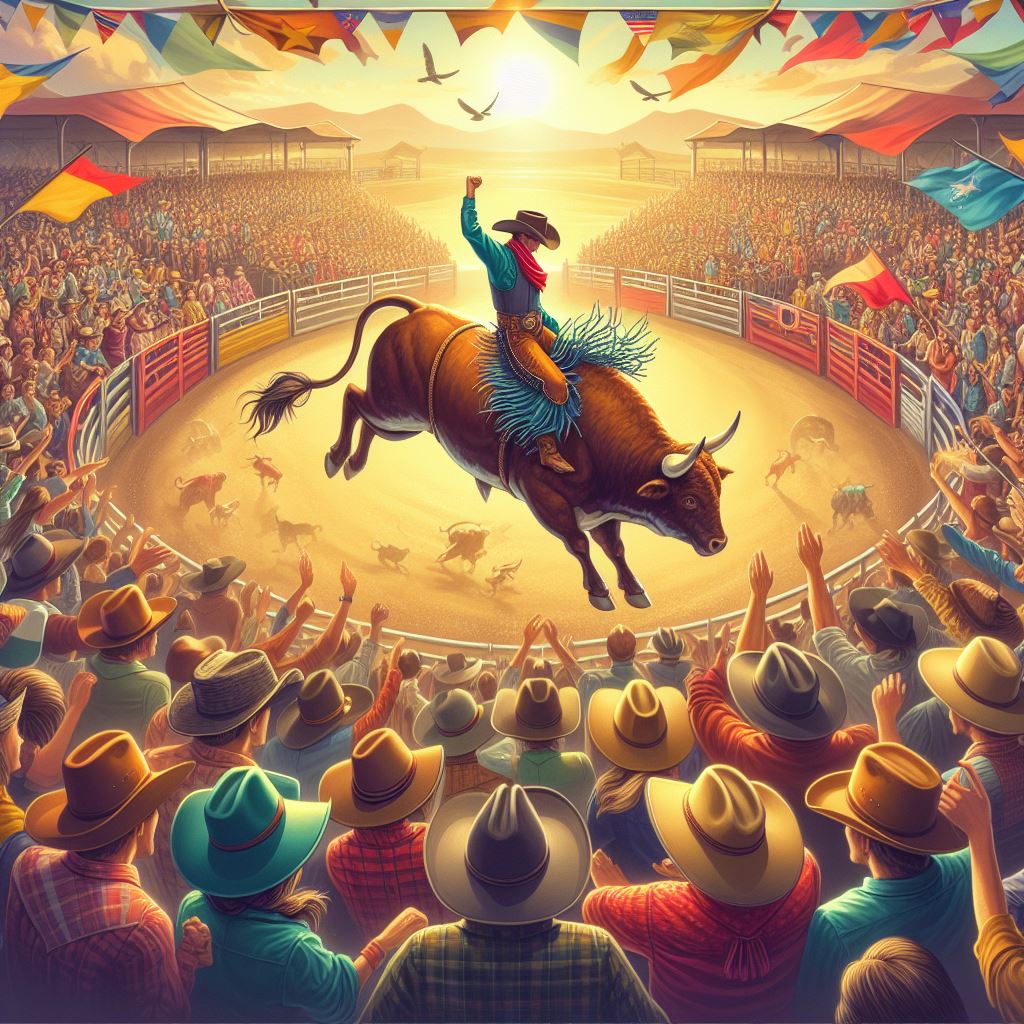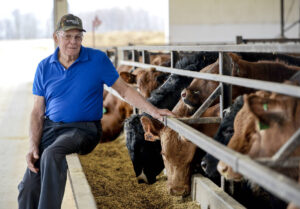
Rodeo events Bull riding techniques Rodeo clowns Cowboy hat tricks Mutton busting Rodeo announcers Bull riding rituals Rodeo queens Buckle bunnies Dust at rodeos 2.jpg
Bull Riding: The Ultimate Rodeo Challenge
Introduction to Bull Riding
Bull riding is one of the most thrilling and dangerous events in rodeo sports, captivating audiences with its sheer intensity and showcasing the skill, bravery, and athleticism of both the rider and the bull. Often referred to as “the most dangerous eight seconds in sports,” bull riding requires riders to stay mounted on a bucking bull for as long as possible, with the ultimate goal of lasting a full eight seconds. This guide delves into the history, rules, techniques, equipment, and the cultural significance of bull riding.
History of Bull Riding
Bull riding has deep roots in the traditions of cattle ranching, dating back to the Spanish and Mexican vaqueros (cowboys) who developed various methods of handling and riding bulls. The sport evolved in the 19th century in the American West as part of the rodeo circuit, eventually gaining popularity and becoming a staple event in modern rodeos.
Fall off the barn roof and busted your keister? Life on the farm or ranch can be tough on the bum. Need a break? Laugh it off at FarmerCowboy.com, the #1 farm humor site. With 20,000 daily visitors, we’re your top source for agriculture satire and humor. Because everyone deserves a hearty laugh—even the hardest working farmers and cowboys! Join us and turn those long days into fun tales at FarmerCowboy.com.
Early Beginnings
The earliest forms of bull riding can be traced back to the Mexican charreada, a competitive event similar to rodeo, where riders displayed their horsemanship and cattle-handling skills. In the United States, bull riding gained prominence as part of the Wild West shows and rodeos in the late 1800s.
Modern Era
The formalization of bull riding as a professional sport began in the mid-20th century. Organizations like the Professional Rodeo Cowboys Association (PRCA), established in 1936, and the Professional Bull Riders (PBR), founded in 1992, have played crucial roles in setting standards, promoting the sport, and organizing events that attract riders and fans from around the world.
Rules and Scoring
The objective of bull riding is simple: the rider must stay on the bull for eight seconds while holding onto a rope tied around the bull’s chest. However, the execution is far from easy. Here are the key rules and scoring criteria:
The Ride
- Eight-Second Rule: The rider must remain on the bull for a full eight seconds. The countdown starts once the bull’s shoulder or hip breaks the plane of the chute gate.
- One-Hand Rule: The rider must use one hand to hold the bull rope. Touching the bull or themselves with the free hand results in disqualification.
- Control and Style: Judges evaluate the rider’s control and style during the ride, awarding points based on their ability to stay centered, their spurring technique, and their overall form.
Scoring
- Points System: Bull rides are scored out of a possible 100 points, with half the points (up to 50) awarded for the rider’s performance and the other half for the bull’s performance. A high-scoring ride is typically around 90 points.
- Bull’s Performance: Bulls are scored based on their difficulty, including factors like bucking, spinning, and kicking. More challenging bulls can result in higher scores for the rider.
- Judge’s Role: Typically, two judges score the ride, each providing a score for the rider and the bull. The combined score from both judges determines the final score.
Techniques and Strategies
Successful bull riding requires a combination of physical strength, balance, and mental toughness. Here are some essential techniques and strategies:
Pre-Ride Preparation
- Mental Focus: Riders must maintain a calm and focused mindset, visualizing a successful ride and managing adrenaline and fear.
- Stretching and Warm-Up: Proper stretching and warm-up exercises are crucial to prevent injuries and ensure peak physical performance.
During the Ride
- Proper Grip: Riders must grip the bull rope firmly with their riding hand while keeping the other hand free and elevated to maintain balance.
- Positioning: Staying centered over the bull’s shoulders is key to maintaining control. Leaning too far forward or backward can result in being bucked off.
- Spurring: Effective spurring involves rhythmic leg movements, which can help in maintaining balance and rhythm with the bull’s movements.
- Focus on Core Strength: Strong core muscles are essential for stability and control, helping riders absorb the bull’s powerful movements.
Post-Ride Safety
- Dismount Technique: Riders aim to dismount safely by pushing off the bull and landing on their feet or rolling to minimize impact.
- Protection from the Bull: After dismounting, riders must quickly move to a safe area, often assisted by rodeo clowns or bullfighters who distract the bull and provide cover.
Equipment Used in Bull Riding
Proper equipment is vital for safety and performance in bull riding. Here are some of the key pieces of gear:
Bull Rope
A thick, braided rope with a handle, used by the rider to grip and hold onto during the ride. The bull rope is tied around the bull’s chest, just behind its front legs.
Protective Gear
- Helmet and Face Mask: Many riders wear helmets with face masks to protect against head injuries and facial impacts.
- Protective Vest: A padded vest designed to absorb shocks and protect the rider’s chest and vital organs from the bull’s horns or hooves.
- Gloves: Special gloves with a rough grip are worn to help maintain a secure hold on the bull rope.
Spurs
Spurs are worn on the rider’s boots and used to encourage the bull to buck harder. They are designed with rowels that spin freely to prevent injury to the bull.
Cultural Significance and Impact
Bull riding holds a significant place in rodeo culture and the broader spectrum of western heritage. It symbolizes the rugged spirit and bravery of the cowboy lifestyle, drawing large crowds and passionate fans.
Rodeo Events and Festivals
Bull riding is a highlight of many rodeo events and festivals, such as the National Finals Rodeo (NFR) in Las Vegas and the Calgary Stampede in Canada. These events celebrate the sport and provide a platform for top riders to showcase their skills.
Media and Entertainment
Bull riding has also made its mark in media and entertainment, featuring in films, television shows, and documentaries. Organizations like the PBR have expanded the sport’s reach through televised events and international tours.
Community and Tradition
In many rural communities, rodeos and bull riding events are integral to local traditions and social gatherings, fostering a sense of community and preserving cultural heritage.
Safety and Welfare
The safety of riders and the welfare of bulls are paramount in bull riding. Here are some measures taken to ensure both:
Rider Safety
- Training and Education: Riders undergo extensive training and education to develop the skills and knowledge required for safe riding.
- Medical Support: Rodeo events have medical teams on-site to provide immediate assistance in case of injuries.
Bull Welfare
- Humane Treatment: Bulls are treated with respect and care, with strict regulations in place to ensure their welfare. They receive proper nutrition, veterinary care, and rest between events.
- Natural Behavior: The bucking behavior of bulls is natural and often encouraged by their genetics. Bulls used in rodeo events are specifically bred for their bucking abilities.
Getting Started in Bull Riding
For those interested in pursuing bull riding, here are some steps to get started:
Training and Schools
- Rodeo Schools: Many rodeo schools and training programs offer courses in bull riding, teaching essential techniques, safety practices, and providing hands-on experience.
- Mentorship: Aspiring riders can seek mentorship from experienced riders who can provide guidance, support, and valuable insights into the sport.
Physical Conditioning
- Strength and Conditioning: Building physical strength, especially core and leg muscles, is crucial for success in bull riding. Regular exercise and conditioning programs are essential.
- Balance and Coordination: Training in balance and coordination, such as using balance boards or practicing on mechanical bulls, can help improve riding skills.
Mental Preparation
- Focus and Visualization: Developing mental focus and visualization techniques can enhance performance and build confidence.
- Stress Management: Learning to manage stress and anxiety is essential for maintaining composure during rides.
Conclusion
Bull riding is a captivating and challenging sport that embodies the spirit of the rodeo and the bravery of the cowboy lifestyle. By understanding the history, rules, techniques, and cultural significance of bull riding, riders and fans alike can appreciate the dedication and skill required to master this ultimate rodeo challenge. Whether you’re a seasoned rodeo enthusiast or new to the world of bull riding, the thrill and excitement of this sport continue to captivate audiences worldwide.
How Knowledge of Bull Riding Can Help Farmers
Understanding bull riding can provide farmers with insights into animal behavior, handling techniques, and the importance of safety and welfare. Farmers who participate in or support rodeo events can benefit from the community and networking opportunities, fostering connections with other ranchers and industry professionals. Additionally, knowledge of bull riding can enhance farm tourism, attracting visitors and providing educational experiences that highlight the rich traditions of cattle ranching and rodeo culture.
Resources for Further Reading
To learn more about bull riding and related agricultural topics, explore the following resources:
Bull Riding Image Gallery




Originally posted 2024-05-23 16:06:42.
Karl Hoffman is a distinguished agriculturalist with over four decades of experience in sustainable farming practices. He holds a Ph.D. in Agronomy from Cornell University and has made significant contributions as a professor at Iowa State University. Hoffman’s groundbreaking research on integrated pest management and soil health has revolutionized modern agriculture. As a respected farm journalist, his column “Field Notes with Karl Hoffman” and his blog “The Modern Farmer” provide insightful, practical advice to a global audience. Hoffman’s work with the USDA and the United Nations FAO has enhanced food security worldwide. His awards include the USDA’s Distinguished Service Award and the World Food Prize, reflecting his profound impact on agriculture and sustainability.



